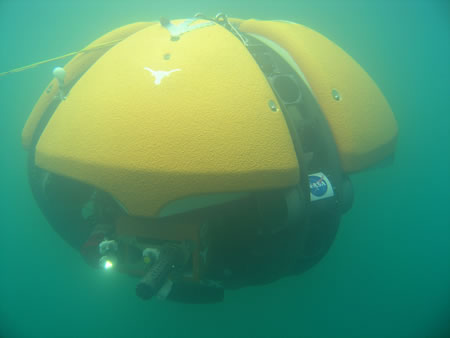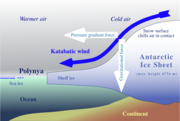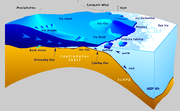 Did you know that there are SEVENTEEN species of penguins?
Did you know that there are SEVENTEEN species of penguins?
Of the 17 species of penguins, only four breed on the Antarctic continent itself: the Adelie, the Emperor, the Chinstrap and the Gentoo penguins. Most other species are found within the subantarctic regions which includes many coastal islands. Penguins are also found as far north as the Galapagos Islands, straddling the Equator.
Jean Pennycook has been tracking the Adelie penguins on Cape Royds for 8 seasons.....you can see her penguins LIVE on PENGUIN CAM: http://thistle.org/pcam/Feature Penguin:
Adelie

| Population: | 2.5 million pairs |
| Location: | Antarctic region |
| Size: | About 30 inches tall |
| Weight: | 11 pounds |
| Diet: | Fish, krill, & other small crustaceans |
| Nests: | Circle mounds of small stones |
Also check out the great PENGUIN fun at:
www.penguinscience.com/classroom_home.php
Penguins Marching into Your Classroom

We wanted to know how climate change is affecting the penguins. We traveled with Dr. David Ainley, on of the most respected penguin researchers in the world. And this is our story.........


Penguins Helped and Hurt by Changing Climate
We take off by helicopter from America's main research base in Antarctica (McMurdo Station) toward Cape Royds, where exactly 101 years ago, in 1908, scientists started studying the local penguin colony. It takes only 20 minutes to get there, but it's one of the most spectacular trips of my life. The Earth is blinding white in every direction. We pass a white wall of mountains off to the left (Dry Valleys) and, on the right, an active volcano with steam curling out of the vent (Mt. Erebus).

Then the helicopter drops us in a small clearing. We climb a snowy ridge, and there at the top are thousands of noisy penguins. They're crowded together on a mound of black volcanic rock, and they're squawking and cooing their hearts out.
These penguins are called Adelies. They look like emperors, which were showcased in the hit movie March of the Penguins. Only Adelies aren't as big — they barely come up to my thighs. Most are milling around; some are flopped on their stomachs on nests which they make out of stones. There are fuzzy chicks that look like toys.

Our guide is Dr. David Ainley. He says he loves studying Adelie penguins, partly because they're so out there. Literally.
"There's no bushes here; they don't dig burrows. They just sit out here in full view and they don't really care if we're around. They have no secrets," Ainley says.
It's surprising to hear him talk this way, because researchers don't usually ascribe human emotions to animals. But when Ainley talks about these penguins, it sounds like he's talking about friends.
"Penguins have no self-doubt," Ainley says, adding sheepishly: "Which I have lots of, for myself. "They are good examples of how we all should live. They're the epitome of the word dauntless," Ainley says.
These Adelies dive up to 400 feet, dodging giant ice floes the size of cars which bash around in the surf. Some of the penguins are already coming back, shooting straight out of the water like a circus trick. Ainley says they can leap nine or ten feet, popping out of the water like corks.

Finding Answers
Scientists say penguins are providing some of the first clues of how global warming is changing the planet. And Ainley has come up with evidence by asking very basic questions: Is this penguin colony growing or shrinking? Are the penguins finding plenty of fish to eat or are they hungry? To get the answers, Ainley arms himself with a syringe loaded with tiny computer identification chips. Then he and his colleagues grab a penguin and hoist it like a squirming dog.
"We put them under our arm and hold them tightly. They're extremely strong. They're very aggressive, and they're very territorial," Ainley says. "And they definitely aren't used to being touched ... They don't even want to be touched by another penguin."
Still, the researchers inject a chip in every angry penguin's shoulder. Then they take a computerized scale, which looks like a rubber mat, and they place it on the path so the penguins cross it. This system lets Ainley track all kinds of information. For instance, what time does each penguin go fishing and when does it come back? How much weight does the penguin gain or lose?
An Unpredictable Future
Scientists have been doing similar studies in other parts of Antarctica. They've plotted their findings against the climate. The results are striking. During the past few decades, as climate patterns in some parts of the continent have changed dramatically, Adelies in some regions have almost disappeared. Their numbers have plunged 80 percent. But the Adelies where Ainley does his research are doing better than ever.
"These penguins are definitely being helped by climate change," Ainley says.

Ainley and other researchers think they know why. Most types of penguins go fishing only in open water, so they're all competing with each other to find food. But Adelies catch their fish by diving deep under the ice. In fact, they're just about the only penguin that can physically do that. So, when there's plenty of ice over the sea, Adelies hardly have any competition and they can get all the food they want.
Now the changing climate is shaking things up. In some areas where most of the ice has melted, Adelies can't survive. But Cape Royds used to have too much ice, and now it has just the right amount. So penguins here are doing great.
Ainley says here's the moral: Global warming is making life unpredictable. Early this year, he was studying another penguin colony, and a glacier was melting.
"There were huge rivers running off this glacier, running through the penguin colony, and the rivers were engulfing these penguin nests. And the penguins just kept collecting rocks to try to make their nests bigger, raise them up out of the water. And for many of them, they couldn't collect rocks fast enough. And so their eggs were just washed away," Ainley says.
Ainley's radio crackles, and we get word that our helicopter is arriving soon....
For more information on Dr. Ainley and his research:

http://www.penguinscience.com/current_sum.php
For More Penguin Stories and Penguin facts visit: www.penguinscience.com/classroom_home.php - or -
http://kids.nationalgeographic.com/Animals/CreatureFeature/Adelie-penguin
Keep Marching Penguins........





































![[Glacier_-_Antarctica.JPG]](https://blogger.googleusercontent.com/img/b/R29vZ2xl/AVvXsEhrOPwDYrhEBSVcXYI-oLCnynt8d6zB69uKM8d0LB_mNcQy-20Pft5aR7kcgo4pGH-p6HD4G53oRRUb6ne_XgkLHbVmus0TLaolM9gWjJnDIoP0MzJL2n5rMH6uvTfELbUdC_eH42PeP6PI/s1600/Glacier_-_Antarctica.JPG)















